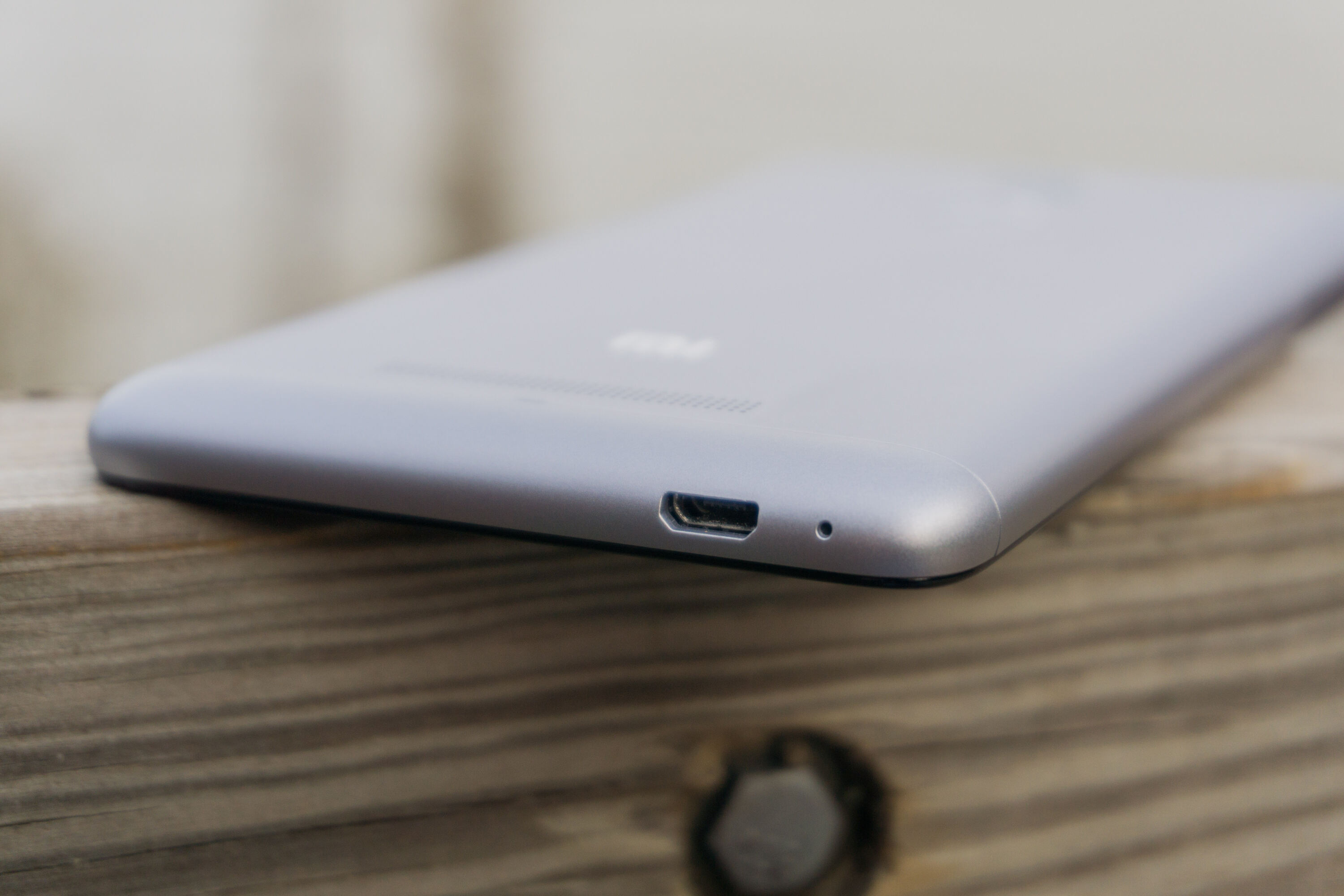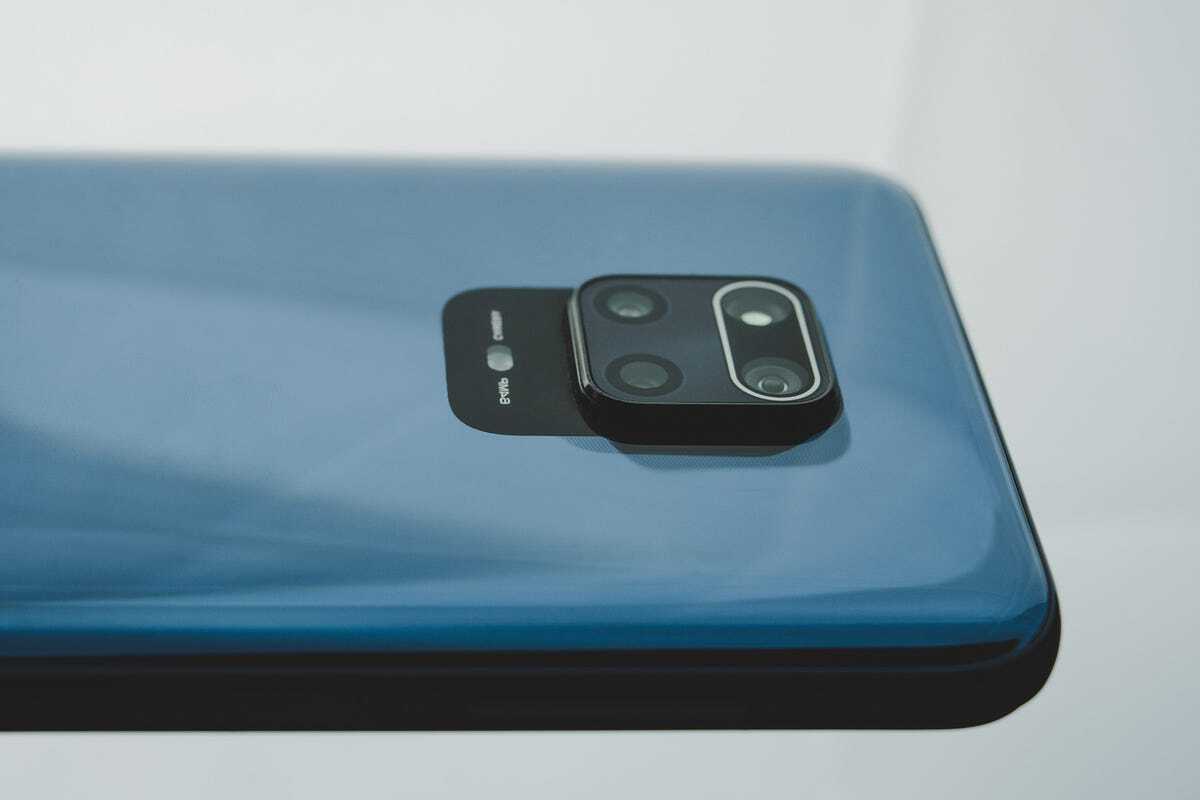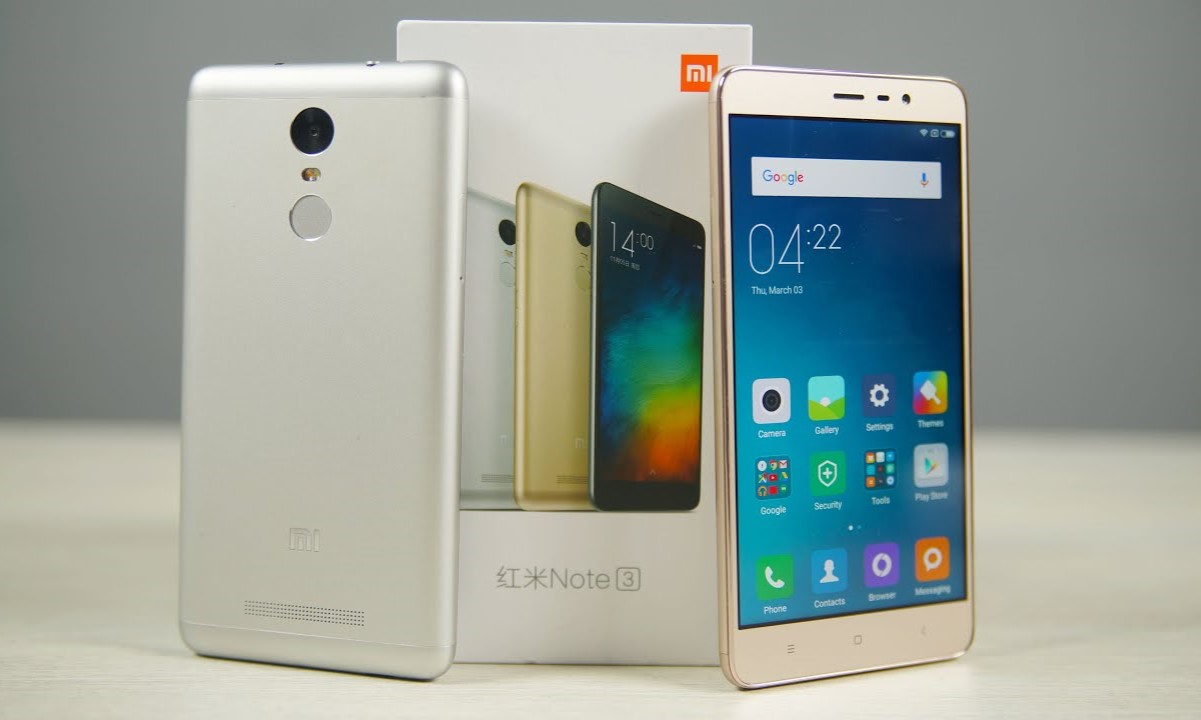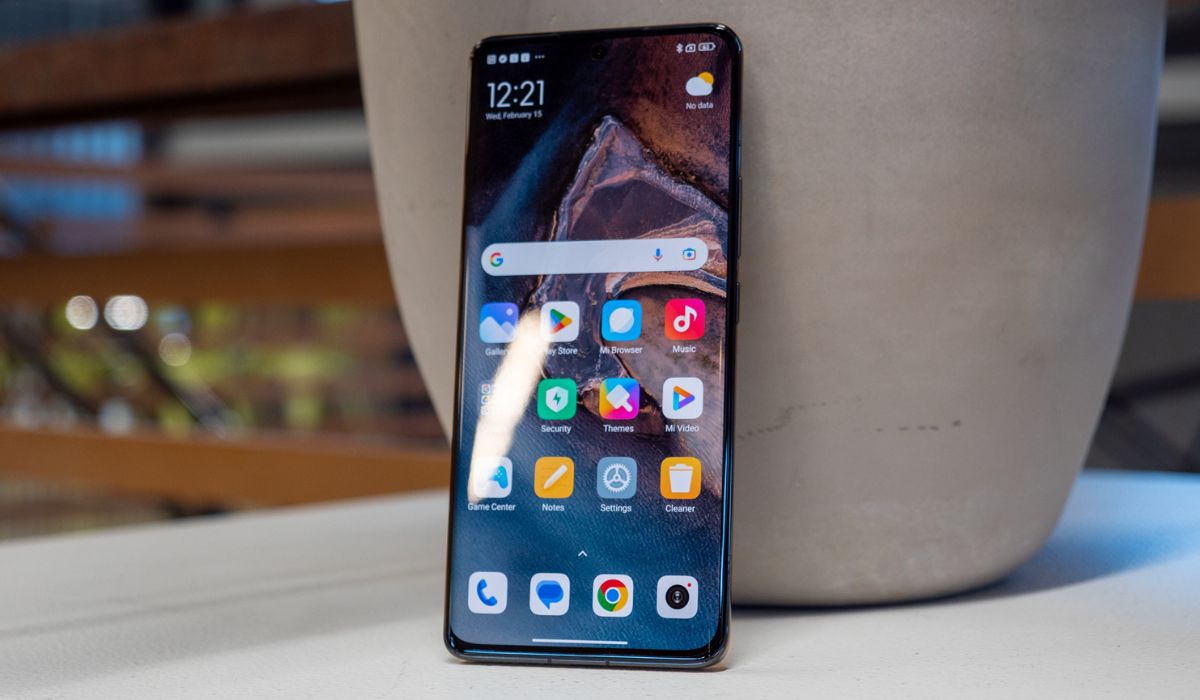Introduction
In the fast-paced world of mobile technology, the ability to customize and optimize your device is a coveted advantage. One of the most popular ways to achieve this is by installing a custom ROM on your Android device. A custom ROM offers a unique user experience, enhanced performance, and a plethora of customization options that are not typically available in the stock firmware.
For Redmi Note 3 users, the prospect of installing a custom ROM opens up a world of possibilities. Whether you're seeking improved battery life, a streamlined user interface, or access to the latest Android features, a custom ROM can breathe new life into your device.
In this comprehensive guide, we will walk you through the step-by-step process of installing a custom ROM on your Redmi Note 3. From unlocking the bootloader to setting up the device, each stage is crucial in ensuring a successful and seamless transition to a custom ROM.
By the end of this guide, you will have the knowledge and confidence to embark on this exciting journey, unlocking the full potential of your Redmi Note 3 and experiencing the myriad benefits of a custom ROM. So, without further ado, let's dive into the first step: unlocking the bootloader.
Step 1: Unlocking the Bootloader
Unlocking the bootloader is the first crucial step in the process of installing a custom ROM on your Redmi Note 3. The bootloader acts as a security feature that prevents unauthorized firmware from being installed on the device. By unlocking the bootloader, you gain the ability to install custom recovery and flash custom ROMs, thereby opening the door to a world of customization and optimization.
To begin the process, you will need to enable Developer Options on your Redmi Note 3. This can be achieved by navigating to the "About Phone" section in the device settings and tapping on the "Build Number" multiple times until you see a message confirming that Developer Options have been enabled.
Once Developer Options are accessible, you can proceed to enable OEM unlocking and USB debugging. These options are crucial for unlocking the bootloader and establishing a connection between your device and the computer.
With Developer Options configured, you can now power off your Redmi Note 3 and boot it into Fastboot mode by holding the Power and Volume Down buttons simultaneously. In Fastboot mode, your device is ready to communicate with the computer for the bootloader unlocking process.
Next, connect your Redmi Note 3 to the computer using a USB cable. On your computer, you will need to install the necessary USB drivers and platform-tools to facilitate the bootloader unlocking process. Once the drivers and platform-tools are installed, open a command prompt or terminal window on your computer and navigate to the directory where the platform-tools are located.
In the command prompt or terminal window, enter the command to check if your device is successfully connected. If your device is detected, you can proceed to initiate the bootloader unlocking process by entering the command to unlock the bootloader.
Upon entering the command, your Redmi Note 3 will prompt you to confirm the bootloader unlocking process. Use the volume keys to navigate and the power button to confirm. Once the bootloader is unlocked, your device will reboot into Fastboot mode, indicating that the process was successful.
With the bootloader unlocked, you have cleared the first hurdle on the path to installing a custom ROM on your Redmi Note 3. This achievement paves the way for the next step: installing TWRP recovery, which will be covered in the following section.
Unlocking the bootloader is a pivotal moment in the customization journey, granting you the freedom to explore the full potential of your Redmi Note 3. It marks the beginning of a transformative process that will elevate your device to new heights of performance and personalization.
Step 2: Installing TWRP Recovery
After successfully unlocking the bootloader of your Redmi Note 3, the next crucial step in the custom ROM installation process is installing TWRP (Team Win Recovery Project) recovery. TWRP is a custom recovery that offers a wide array of features, including the ability to flash custom ROMs, create and restore backups, and perform system maintenance tasks.
To begin the installation of TWRP recovery, you will need to download the TWRP image file specifically designed for the Redmi Note 3. It's essential to ensure that you download the correct TWRP image to avoid compatibility issues and potential risks to your device.
Once you have obtained the TWRP image file, you can proceed to boot your Redmi Note 3 into Fastboot mode. This can be achieved by powering off the device and then holding the Power and Volume Down buttons simultaneously. In Fastboot mode, your device is ready to communicate with the computer for the TWRP recovery installation process.
Next, connect your Redmi Note 3 to the computer using a USB cable. On your computer, navigate to the directory where the platform-tools are located. Open a command prompt or terminal window in this directory to execute the commands necessary for installing TWRP recovery.
In the command prompt or terminal window, enter the command to flash the TWRP image file to your Redmi Note 3. This process involves using the fastboot utility to transfer the TWRP image to your device's recovery partition. Once the flashing process is complete, you can reboot your device into recovery mode to verify the successful installation of TWRP.
Upon entering recovery mode, you will be greeted by the TWRP interface, signaling that the installation was successful. From this point, you have unlocked a powerful tool that will facilitate the installation of the custom ROM on your Redmi Note 3.
Installing TWRP recovery is a pivotal stage in the custom ROM installation journey, as it equips you with the necessary tools to seamlessly transition to a custom firmware. With TWRP installed, you are one step closer to experiencing the enhanced performance, customization options, and unique features offered by a custom ROM tailored to your preferences.
Step 3: Downloading the Custom ROM
With the bootloader unlocked and TWRP recovery successfully installed on your Redmi Note 3, the next pivotal step in the custom ROM installation process is downloading the custom ROM that aligns with your preferences and requirements. A custom ROM offers a myriad of benefits, including enhanced performance, extended battery life, and a personalized user experience that goes beyond the limitations of stock firmware.
Before proceeding with the download, it's essential to research and identify a reputable source for custom ROMs tailored to the Redmi Note 3. There are several trusted online communities and forums where developers and enthusiasts share their custom ROM creations, providing a diverse selection to cater to different user preferences.
When selecting a custom ROM, consider factors such as the Android version, features, and performance optimizations offered by each ROM. Additionally, user feedback and reviews can offer valuable insights into the stability and functionality of a particular custom ROM, aiding in the decision-making process.
Once you have identified the custom ROM that resonates with your preferences, proceed to download the ROM package to your computer. It's crucial to ensure that the custom ROM is compatible with your specific model of the Redmi Note 3 to avoid potential compatibility issues and ensure a smooth installation process.
After downloading the custom ROM, it's advisable to verify the integrity of the ROM package by checking its MD5 or SHA256 checksum. This step helps ensure that the downloaded file has not been corrupted during the download process, mitigating the risk of encountering errors during the installation.
With the custom ROM downloaded and verified, you are now equipped with the essential component that will transform your Redmi Note 3 into a personalized powerhouse of performance and features. The next step in the journey involves the installation of the custom ROM, where you will harness the full potential of the ROM to elevate your device to new heights of functionality and customization.
Downloading the custom ROM marks a significant milestone in the customization journey, setting the stage for the transformative process that awaits as you embark on the installation phase. With the custom ROM in hand, you are poised to unlock the full potential of your Redmi Note 3 and experience the unparalleled benefits of a tailored firmware designed to meet your unique needs and preferences.
Step 4: Installing the Custom ROM
With the bootloader unlocked, TWRP recovery in place, and the custom ROM downloaded, you are now poised to embark on the transformative process of installing the custom ROM on your Redmi Note 3. This pivotal step marks the culmination of meticulous preparation and sets the stage for the realization of a personalized user experience, enhanced performance, and a myriad of customization options.
To initiate the installation of the custom ROM, begin by transferring the downloaded ROM package to the internal storage of your Redmi Note 3. This can be accomplished by connecting your device to the computer via a USB cable and transferring the ROM package to a readily accessible location on the internal storage.
Once the ROM package is successfully transferred, disconnect your Redmi Note 3 from the computer and reboot it into TWRP recovery mode. In TWRP, you will be greeted by a user-friendly interface that provides a multitude of options for customizing and optimizing your device.
Within TWRP, navigate to the "Install" option and locate the directory where the custom ROM package is stored. Select the ROM package to initiate the installation process. Before proceeding, it's advisable to perform a full backup of your existing firmware and data to mitigate any potential risks associated with the installation.
After confirming the installation of the custom ROM, the flashing process will commence, replacing the stock firmware with the custom ROM. This process may take a few minutes to complete, during which TWRP will display real-time progress indicators to keep you informed.
Once the installation is finalized, you will receive a notification indicating the successful installation of the custom ROM. At this point, you can choose to perform additional actions such as wiping the cache and Dalvik cache to ensure the seamless integration of the custom ROM with your device.
With the custom ROM successfully installed, you can reboot your Redmi Note 3 and revel in the transformative experience that awaits. As your device boots into the newly installed custom ROM, you will be greeted by a personalized user interface, enhanced performance, and a wealth of customization options that cater to your unique preferences.
The installation of the custom ROM marks a significant milestone in the customization journey, unlocking the full potential of your Redmi Note 3 and ushering in a new era of functionality and personalization. With the custom ROM seamlessly integrated into your device, you are now poised to explore the myriad benefits and features that await, tailored to elevate your user experience to unprecedented heights.
Step 5: Rebooting and Setting Up the Device
With the custom ROM successfully installed on your Redmi Note 3, the final step in this transformative journey involves rebooting the device and setting it up to fully embrace the personalized user experience, enhanced performance, and myriad customization options offered by the custom firmware.
Upon rebooting your device, you will be greeted by the freshly installed custom ROM, signaling the beginning of a new chapter in your device's functionality and capabilities. As the device boots into the custom ROM, take a moment to appreciate the seamless transition from the stock firmware to a tailored user experience designed to meet your unique preferences and requirements.
During the initial setup process, you will have the opportunity to configure various aspects of the custom ROM, including system preferences, user interface customizations, and privacy settings. This stage allows you to personalize your device to align with your specific usage patterns and aesthetic preferences, ensuring a user experience that resonates with your individuality.
As you navigate through the setup wizard, take the time to explore the diverse array of features and optimizations offered by the custom ROM. From advanced customization options to performance enhancements and privacy controls, the custom ROM empowers you to tailor your device to suit your lifestyle and productivity needs.
Once the setup process is complete, take a moment to familiarize yourself with the unique elements of the custom ROM, such as custom themes, advanced system settings, and exclusive features that set it apart from the stock firmware. Embrace the newfound flexibility and control that the custom ROM affords, allowing you to optimize your device in ways that were previously beyond reach.
With the device fully set up and customized to your preferences, take the time to explore the enhanced performance, extended battery life, and unique features offered by the custom ROM. Whether it's a streamlined user interface, advanced customization options, or access to the latest Android features, the custom ROM elevates your Redmi Note 3 to new heights of functionality and personalization.
As you navigate through the interface and experience the seamless integration of the custom ROM with your device, revel in the realization of a personalized user experience that reflects your individuality and preferences. The journey from unlocking the bootloader to setting up the custom ROM has culminated in a transformative experience that empowers you to harness the full potential of your Redmi Note 3, tailored to your unique needs and aspirations.

























